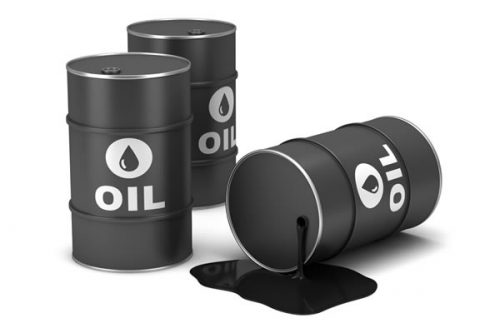WTI Oil Price Nears 3-Year Low Ahead of Trump-Harris Showdown
Oil prices tumbled over 4% today, reaching a 3-year low as trader sentiment continued to sour ahead of tonight’s highly anticipated U.S. Presidential debate between Donald Trump and Kamala Harris, with bearish sentiment sinking to multi-year lows as traders continue overreacting to any negative development and ignoring relatively healthy fundamentals.
Indeed, hedge funds and other money managers have turned the most bearish on crude ever since the CFTC started to publish information on market positioning, with speculative positioning in crude oil currently extremely short.
Brent and WTI net longs totaled a mere 139,242 lots in the week ended September 3; net speculative long bets across the four Brent and WTI contracts clocked in at a mere 2.3% of open interest, the lowest level going back to the start of 2011 and 2 percentage-points below the pandemic-era low.
Net selling over the past week came in at 108.8 million barrels (mb), bringing cumulative net selling over the past eight weeks to 311.2 mb. Meanwhile, commodity analysts at Standard Chartered have reported that the bank’s proprietary money-manager crude oil positioning index has sunk to -100.0 for the first time this year. According to the analysts, the previous time their positioning index reached -100.0 was in December 2023, immediately followed by a sharp rally. However, here’s the bad news: the index reached -100.0 three times in Q2 2023 and the price low in that cycle was not achieved until a week after the third occurrence, meaning there’s still some scope for further net selling. Positioning for ICE Brent is dire at -93.9, but it’s considerably milder for NYMEX WTI at -51.8 with speculative long-short ratio for WTI still well above historical lows.
According to StanChart, the current extreme in crude positioning is based on [incorrect] expectations of a looming crude oil surplus as well as persistent fears of a severe economic discontinuity. Whereas it’s going to take time for oil markets to start paying attention to actual fundamentals, positioning has turned extreme enough to skew price risks to the upside.
StanChart points out there’s little evidence of an approaching economic cliff-edge in the latest Energy Information Administration (EIA) weekly data, with the main negatives in the report being the counter-seasonal rise in gasoline inventories and w/w falls in implied demand. The strongest part of the latest release was crude oil, with a -1.816 mb/d flow balance.
OPEC+ Delays Plans To Hike Production
One of the most important developments in oil markets over the past week was the announcement that OPEC+ oil alliance has agreed to postpone plans to hike production by a scheduled 180,000 barrels per day in October, as part of a program to gradually return a broader 2.2 million barrels per day to the market over the following months. The 2.2 million bpd cut–implemented over the second and third quarters–was scheduled to expire at the end of the current month. Saudi Arabia, the United Arab Emirates, Russia, Iraq, Kazakhstan, Kuwait, Oman and Algeria committed to the voluntary reduction that falls outside of the official policy binding all members of the OPEC+ coalition.
Uncharacteristically, the extended curbs failed to generate any kind of momentum, with the selloff continuing and oil prices slumping back below $70 a barrel.
According to Ben Luckock, global head of oil at oil and commodities trading firm Trafigura, the OPEC+ announcement failed to generate enthusiasm because the outlook for oil balances was “not great”.
Earlier, OPEC cut its forecast for global oil demand growth in both 2024 and 2025, revising this year’s outlook to a still healthy 2.03 million b/d whilst cutting next year’s number marginally lower to 1.74 million b/d. As the oil market gathered in Singapore this week for the annual Appec conference, Luckock correctly predicted that oil would dip into the 60s soon, depressed by weakening demand in China.
Not even the recent removal of some 700,000 bpd from the markets has been able to jumpstart the stalled oil price rally. Libya is yet to resume oil exports two weeks after the Haftar clan blocked production in a bid to gain leverage over a battle to control the Central Bank.
Six engineers have told Pan-Arab newspaper Asharq-Al-Awsat that exports remained halted at the ports of Es Sidra, Ras Lanouf, Hariga, Zueitina, Brega and Sirte although some production was being increased to feed local power generation and ease fuel shortages.
According to S&P Global, up to 230,000 b/d crude output has been restored at three eastern fields under the control of warlord Khalifa Haftar, a far cry from Libyan output at 1.15 million b/d in July. Libyan crude exports reached multi-year highs in April, with refiners in Northwest Europe and the Mediterranean prizing Libyan light sweets.
There are a few positives, though, with the ongoing shutdown of Libyan oil exports proving beneficial to some crude oil grades including Azeri, African and U.S. oil grades. To wit, Azeri and Kazakh crude prices have shot up ever since the Libyan disruptions last week as refiners sought replacement barrels. Meanwhile, Europe’s imports of WTI Midland hit 1.43 million barrels per day in August, good for a 24% month-on-month increase, partly supported by Libyan outages. U.S. WTI Midland physical crude prices have strengthened relative to WTI, with the price differential between the two grades widening to 80 cents per barrel from 60 cents just prior to the shutdown of Libyan oil fields.
In the meantime, tropical storm Francine, which is likely to become a category 1 Hurricane on Tuesday afternoon has led to shut-ins of crude oil and gas production in the Gulf of Mexico. The BSEE reported on Tuesday morning that personnel has been evacuated from at least 130 platforms, leading to a production shut-in of 412,070 bopd of crude oil and 494 MMCFD of natural gas, roughly 25 percent of total Gulf of Mexico production.



